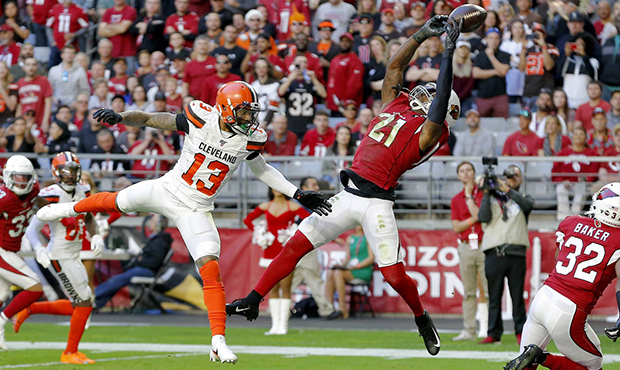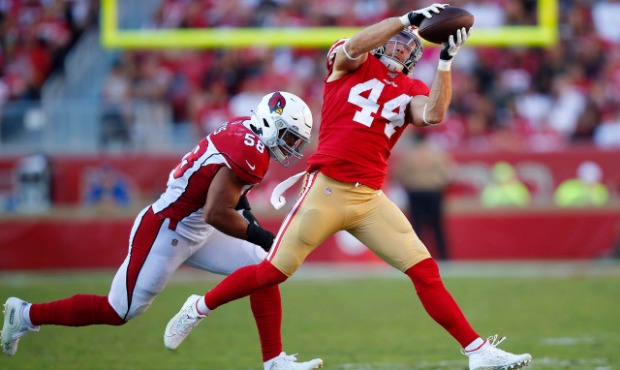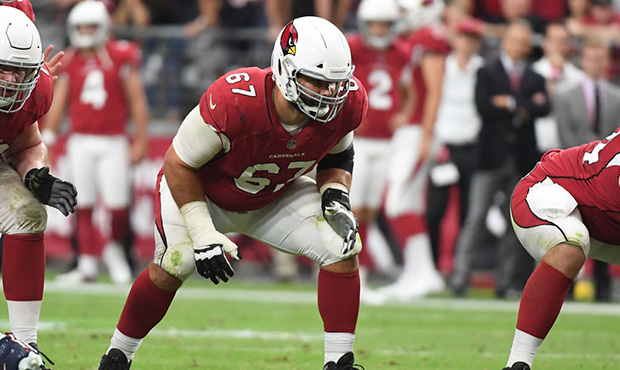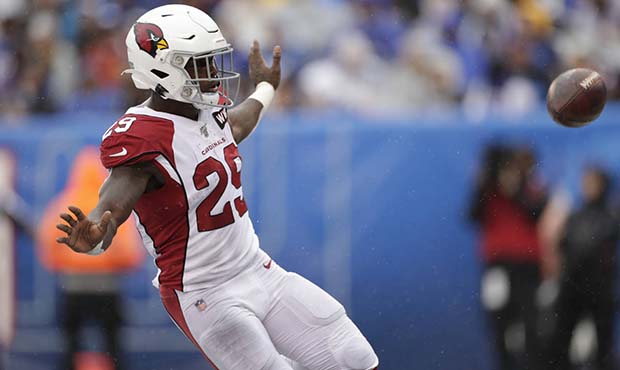Then and now: Kenyan Drake replaces David Johnson as top Cardinals RB
Jul 1, 2020, 8:31 AM
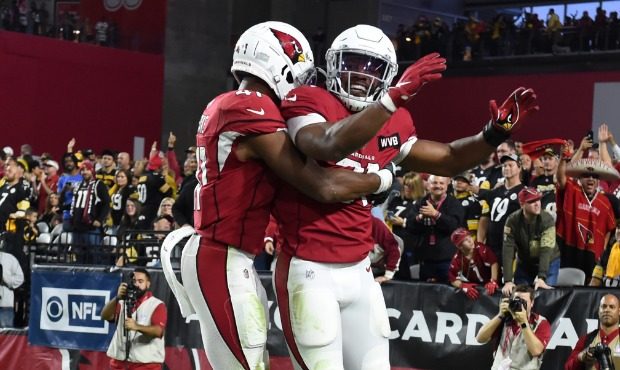
David Johnson #31 of the Arizona Cardinals celebrates with Kenyan Drake #41 after scoring a touchdown against the Pittsburgh Steelers during the second half at State Farm Stadium on December 08, 2019 in Glendale, Arizona. Pittsburgh won 23-17. (Photo by Norm Hall/Getty Images)
(Photo by Norm Hall/Getty Images)
The Arizona Cardinals believe they’ve plugged holes and built depth. On paper they look improved, though they’ve not yet hit the practice field due to the coronavirus.
They speak about flashes of offensive brilliance last year, the growth of quarterback Kyler Murray and a thinly manned defense’s improvements to end 2019 as reasons to be optimistic about 2020.
But the biggest reason for optimism is the upgraded roster. How different does this 2020 roster really look compared to the one that began the first training camp under head coach Kliff Kingsbury?
By position, here’s a then-and-now comparison of the roster last offseason next to the current 2020 Cardinals team based on our 2019 July preview series leading into 2019 training camp.
Then
2019 projected starter
David Johnson
Depth
Chase Edmonds, T.J. Logan, D.J. Foster
Biggest storyline: Cardinals running back David Johnson expects to find his 2016 juice
X-factor: Second-year pro Chase Edmonds backing up or playing alongside Johnson
Now
Projected starters
Kenyan Drake
Depth
Chase Edmonds, Eno Benjamin, D.J. Foster
Biggest storyline
Four years is a lot of time in the NFL, let alone in running back terms. It’s been four years since Johnson took the NFL by storm by breaking records. His 2016 seemingly pointed in a new direction of how to use premier backs.
Turns out the way he was used might’ve cost him.
Injuries, those serious and some more minor, held Johnson back over the following three seasons. Even when he was healthy to begin 2019, he just didn’t look like his explosive self playing in an offense led by someone other than Bruce Arians. For the second consecutive year, a head coach lost confidence in him, and Arizona’s midseason acquisition of Kenyan Drake marked the beginning of Johnson’s end with the Cardinals.
After being traded to the Houston Texans in the DeAndre Hopkins deal, he enters his third prove-you’ve-still-got-it season in a row.
Drake, on the other hand, enters his first. With a lot less wear on the tire treads, the Alabama-schooled back is the No. 1 option for the first time, really, since high school.
He comes off a season in which he rushed for 5.2 yards per game despite being thrown into a new offense mid-year. Head coach Kliff Kingsbury obviously was wowed by how quickly Drake found comfort in the team’s offense.
Entering 2020, Drake is making more than $8 million on the transition tag, so there is pressure to produce something close to what he did for half a season in 2019. Regardless of whether he and the team agree to a contract extension beyond 2020, there are enormous expectations coming off a big season — similar expectations his predecessor failed to meet for three years in a row.
By all accounts, Kingsbury will ride Drake. We know the running back has the talent and the mind to fit in after he rushed for 817 yards and eight scores over eight games last year. How he holds up as the guy will be something to watch.
X-factor
The real question is how much Kingsbury’s use of Drake last year will carry over with two promising talents behind him this season.
Edmonds appeared to have the trust of Kingsbury last year like he did with then-coach Steve Wilks as a rookie, but a mid-year injury after his biggest game (126 rushing yards and three touchdowns against the Giants on Oct. 20) was followed by just three more games, 45 offensive snaps, nine more handoffs taken and 16 combined rushing yards.
Was he not fully healthy? Would Kingsbury have used him more if he were?
Does Arizona really just feel like it can’t pull Drake off the field?
Benjamin enters the picture as a similar back to Edmonds: smaller, yet physical and multi-faceted. It’s a matter of which one of them stand out behind Drake but also how much Kingsbury uses them to keep the new No. 1 running back fresh.




